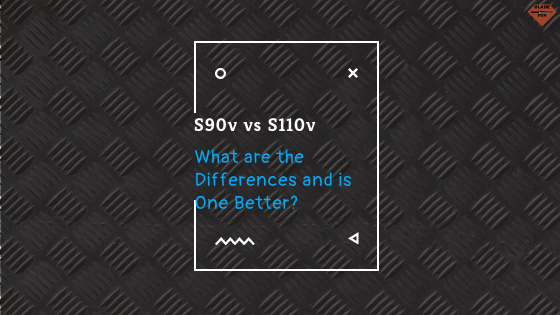S90V and S110V are two steels that are in the high-quality steel category. Because they are close to the top, it only makes sense to compare the two to see which one is truly better.
Here is the short answer:
Generally speaking, S90V is easier to sharpen than S110V but does not hold its edge as well. While S110V is better at holding its edge, it’s more prone to chipping when compared to S90V. S110V is also not nearly as tough as S90V. S110V has good edge retention, but S90V is a better all-purpose steel.
With the short answer out of the way, we can take a deeper dive into each steel and see which one is better at what.
S90V
S90V is premium steel and is considered one of the best steel for the money. S90V is known for its durability, wear resistance, and edge integrity.
S90V’s full name is CPM-S90V. The CPM stands for Crucible Particle Metallurgy which is a process that is used to make the steel particles more even. More even particles in the steel lead to better edge retention and less of a chance of soft spots in the steel.
However, S90V has its downsides. S90V does not keep its edge very well (at least not in comparison to S110V), so it will need to be sharpened fairly often.
Here is what S90V is made of:
- 1.45% carbon
- 14% chromium
- 2% molybdenum
- 4% vanadium
Now you may be asking: What do each of these materials mean?
Here is the answer: The carbon helps increase blade strength (but too much carbon will lead to your blade chipping), chromium gives the blade corrosion resistance (anything above 10% chromium is considered stainless steel, and with S90V having 14%, it is very corrosion resistant), the molybdenum makes knives easier to harden (it makes the knife easier to heat treat), and the vanadium helps with edge retention.
S10V
S110V is a stainless tool steel that is very wear-resistant and great at holding its edge. S110V is known for being very edge retentive steel that is not easy to dull. With S110V, you don’t need to sharpen it very often at all.
Like S90V, S110V’s full name is CPM-S110V. And like S90V, it goes through the same Crucible Particle Metallurgy process that makes it extra durable.
S110V is an extremely hard steel. This means it’s going to be extremely hard to sharpen. However, because of how hard it is, it can be prone to chipping. So, with S110V, it’s generally not the best idea to do anything super rough on the blade like batoning.
Here is what S110V is made of:
- 2.8% Carbon
- 15.2% Chromium
- 2.2% Molybdenum
- 9% Vanadium
- 2.5% Cobalt
- 3% Niobium
Cobalt increases the effect of each material and Niobium increases hardness and wear resistance.
Which one is better?
It depends. If you want a knife you will sharpen once and not have to sharpen again, then you’ll want S110V. But if you want a steel that is very well-rounded and keeps its edge fairly well, then you will want S90V.
However, you can’t go wrong with either steel; They are both very wear and weather-resistant and high quality. But if I had to choose one, I would go with S90V. It is a little more well-rounded and a lot easier to sharpen.
Our favorite knives in each steel
So you know about each steel, but what knives do you need? Here are our favorites:
Benchmade Altitude (S90V)
The Benchmade Altitude is a super lightweight hunting/backpacking knife. It weighs a mere 1.8 ounces and has a razor-sharp 3-inch blade with G-10 micro scales for extra grip. The Altitude also has a weatherproof coating that will keep the knife from rusting.
Check out this knife here (link to Amazon)
Spyderco Para 3 (S110V)
The Spyderco Para is an EDC knife that is a little different than most. It has a unique blade shape and a thumb hole for opening. It has a grippy FRN handle and is lightweight and small, making it great for carrying.
Check out this knife here (link to Amazon)
Conclusion
If you need a knife that will hold an edge for a super long time, then you will want S110V. But if you want a more well-rounded steel that is okay at holding an edge but is easy to sharpen, then go with S90V. Keep in mind, other than sharpening, it doesn’t really matter which steel you choose, both steels are very good steels and will work in 90% of all knife applications.
Check out more of our articles about everything knife-related here.

